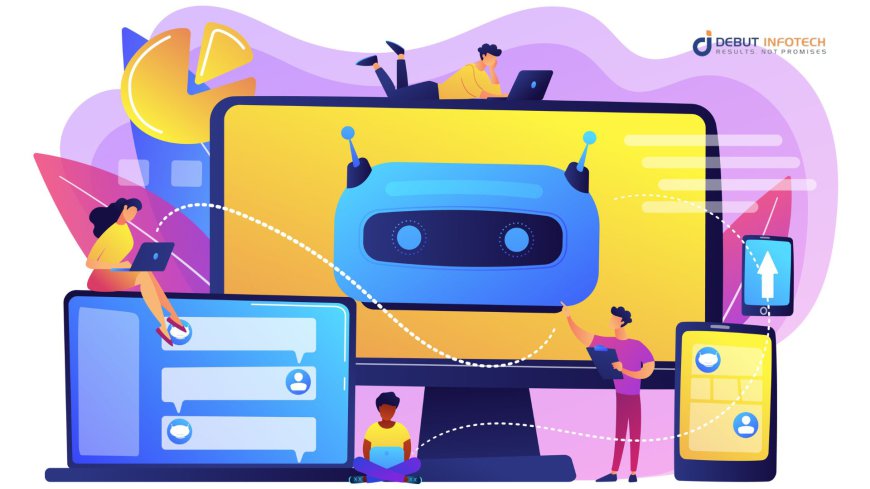Optimize AI with Chatgpt Embeddings for Better Results
These vectors capture the semantic meaning of words, allowing AI models to work with language in a mathematical space. In Chatgpt, embedding is the fundamental process that underlies its ability to understand and generate text.
Introduction
Embeddings are a fundamental concept in machine learning and natural language processing (NLP), serving as a bridge between human language and machine understanding. In the context of ChatGPT and other language models, embeddings enable the model to represent words, phrases, and even sentences in a mathematical form that a machine can process.

What Are Embeddings?
In the realm of NLP, Chatgpt embeddings transform words or phrases into dense vectors of real numbers. These vectors capture semantic relationships between words, allowing the model to "understand" their meanings, contexts, and nuances. Traditionally, computers treat words as discrete units, with no inherent understanding of the relationships between them. Embeddings, however, place words in a continuous vector space, where similar words are positioned closer together.
How Do ChatGPT Embeddings Work?
ChatGPT, like many advanced NLP models, uses embeddings to represent text at multiple levels—words, phrases, and sentences. These embeddings are learned from vast amounts of data during the model's training process, capturing the complex relationships between words and their meanings. Here's how the process works:
-
Tokenization: The first step in generating embeddings is tokenizing the text. ChatGPT breaks down the input text into smaller units, often words or subwords, called tokens. Each token is then mapped to an embedding vector.
-
Embedding Space: Once tokenized, the model assigns each token a position in the embedding space. This space is a high-dimensional mathematical structure where similar tokens (in terms of meaning or context) are located near each other.
-
Contextualized Embeddings: Unlike traditional word embeddings, which assign a single vector to each word regardless of context, ChatGPT produces contextualized embeddings. This means that the same word can have different embeddings depending on the surrounding text. For instance, the word "bank" in "river bank" will have a different embedding than in "financial bank."
-
Multi-Level Understanding: ChatGPT's embeddings operate at different levels, allowing the model to capture nuances in language. The model can understand relationships between individual tokens, phrases, and entire sentences, which contributes to its ability to generate coherent and contextually appropriate responses.
-
Training and Fine-Tuning: During training, the model learns these embeddings by processing vast amounts of text data. The model continuously adjusts the positions of words in the embedding space, learning patterns of language, syntax, and semantics. Fine-tuning further refines these embeddings for specific tasks, such as customer support or content generation.
Applications of ChatGPT Embeddings
The power of embeddings extends beyond the internal workings of ChatGPT. They have broad applications in various NLP tasks, enabling machines to understand and generate human-like language across multiple domains.
1. Text Similarity and Search
One of the primary uses of embeddings is to measure the similarity between different pieces of text. By converting text into embeddings, it becomes easier to compare their meanings. This is particularly useful in applications like search engines or recommendation systems, where understanding the intent behind a query is crucial. ChatGPT's embeddings can help match user queries to relevant information, improving the accuracy and relevance of search results.
2. Sentiment Analysis
Embeddings also play a key role in sentiment analysis. By understanding the relationships between words and their context, embeddings allow models to detect whether a sentence or paragraph conveys positive, negative, or neutral sentiment.
3. Machine Translation
In machine translation, embeddings facilitate the conversion of text from one language to another. Since embeddings capture semantic meaning, they allow models to translate not just words but also the context and nuance of sentences. ChatGPT's embeddings help improve translation accuracy by understanding the relationships between words in different languages.
4. Text Generation
When generating text, embeddings play a crucial role in ensuring that the output is coherent and contextually appropriate. By using embeddings, ChatGPT can generate responses that are contextually aware and maintain the logical flow of a conversation. This makes the model useful in various content generation tasks, from writing assistance to automated customer support.
5. Recommendation Systems
Embeddings are also used in recommendation systems to suggest relevant content to users based on their preferences and behavior. By converting user inputs and content into embeddings, these systems can match users with similar interests or recommend items that align with their preferences, such as articles, movies, or products.
Also, read this related blog on the what is robotic process automation.
Benefits of ChatGPT Embeddings
-
Semantic Understanding: Embeddings enable ChatGPT to understand the meaning behind words and phrases, improving the model's ability to generate meaningful and contextually appropriate responses.
-
Efficiency: Embeddings allow ChatGPT to process large volumes of text data efficiently. By representing text in a compact vector form, the model can perform computations quickly and scale to handle complex tasks.
-
Flexibility: With embeddings, ChatGPT can be applied to a wide range of NLP tasks, from text classification to summarization, making it a versatile tool for various industries.
-
Context-Aware Responses: Contextualized embeddings give ChatGPT the ability to understand language in context, allowing for more accurate and human-like responses in conversation and text generation tasks.
Conclusion
ChatGPT embeddings are at the heart of the model's ability to understand and generate human language generative ai development . By representing words and phrases in a continuous vector space, these embeddings enable the model to process language more effectively and perform a wide range of tasks. As NLP models continue to evolve, embeddings will remain a critical component in advancing machine understanding of human language. Whether used for search, sentiment analysis, or text generation, embeddings are revolutionizing how we interact with AI, making language models like ChatGPT more powerful, versatile, and capable than ever before.
